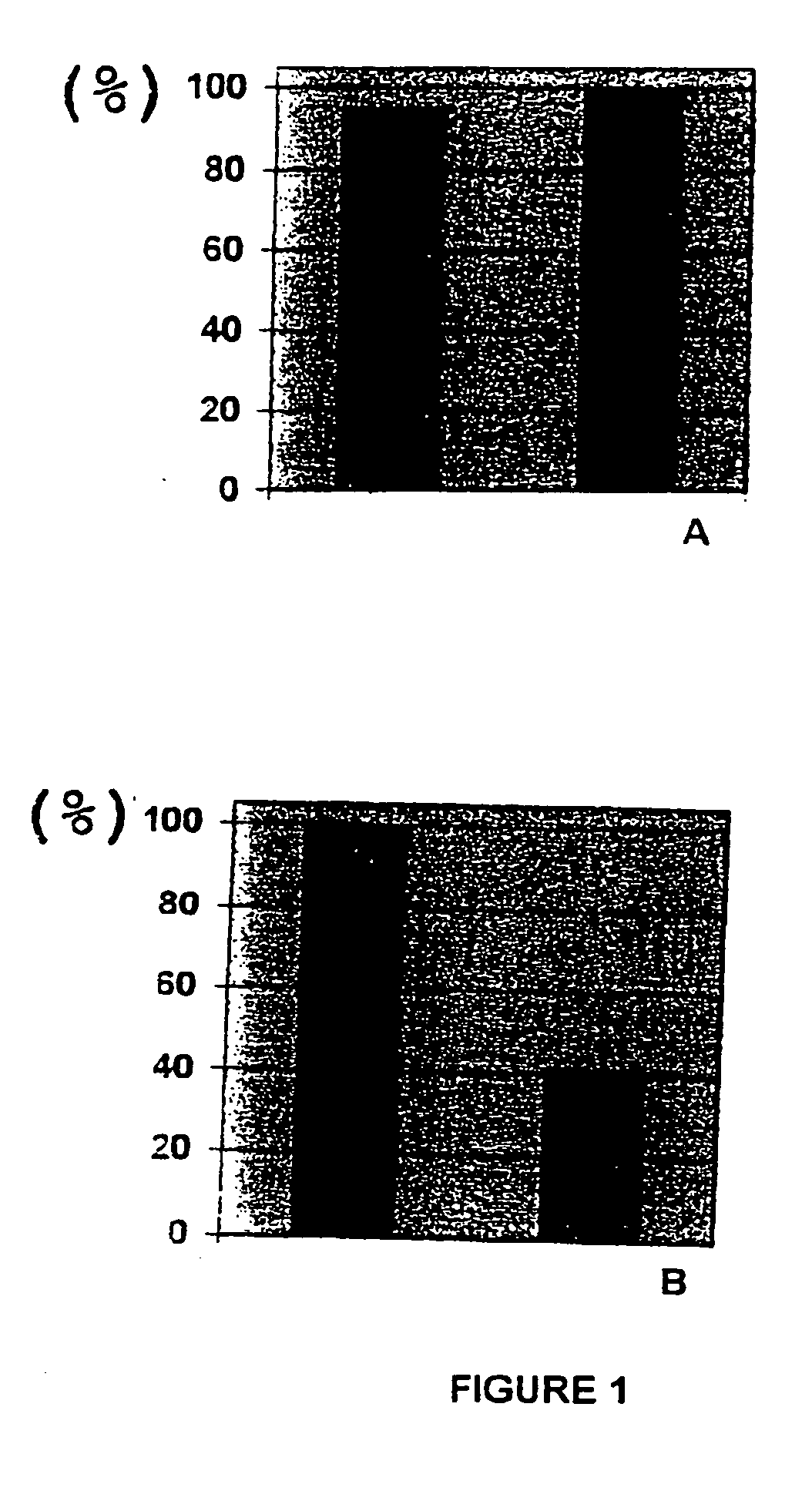Method for the production of beta-carotene
a beta-carotene and production method technology, applied in the field of beta-carotene production, can solve the problems of difficult use of .beta-carotene in the food industry, limited use of supercritical co.sub.2, and unsuitable methods for obtaining
- Summary
- Abstract
- Description
- Claims
- Application Information
AI Technical Summary
Benefits of technology
Problems solved by technology
Method used
Image
Examples
example 2
[0086] The incorporation of lecithin into the culture medium increases the production of beta-carotene and reduces the relative level of gamma-carotene in a pilot fermenter. When it is combined with the control of pH, the effect on the production of gamma-carotene is even greater.
[0087] An inoculum medium is prepared that contains per litre: soybean hulls, 23 g; corn flour, 47 g; monopotassium phosphate, 0.5 g; thiamine hydrochloride, 0.002 g. Its initial pH is 6.3. The medium is distributed in 2000 ml Erlenmeyer flasks, with 500 ml in each flask. After sterilisation, they are seeded with suspensions of spores of B. trispora strain (+) and B. trispora strain (-) in separated flasks and incubated at 25.degree. C. for 48 hours with orbital shaking at 250 rpm and 5 cm eccentricity.
[0088] Each one of the strains is transferred under sterile conditions to an intermediate growth tank with a culture medium with the following composition per litre: Pharmamedia, 29 g; corn flour, 47 g; monop...
example 3
[0094] Three litres of fermentation broth are harvested. The titre of the broth is 6 g of .beta.-carotene per litre. The biomass of these broth is recovered by means of a Buchner filtration, obtaining 1000 g of wet biomass. The wet biomass is re-suspended in 3 l of azeotropic isopropanol 85 / 15 and shaken for 30 minutes. The purified biomass is once again recovered by a Buchner filtration.
[0095] This biomass is dried in an oven under vacuum at a temperature less than 45.degree. C. and for 18 hours, until the content of residual solvents is in the range of 1-2%. A total of 270 g of dry biomass are obtained and purified with a .beta.-carotene content equivalent to a purity of 6.5%.
[0096] The dry biomass is ground in a hammer mill and 1 mm sieve to give a solid with the same specific purity and conditioned to allow extraction with the solvent.
[0097] The extraction is carried out by mixing 270 g of ground biomass with 4500 ml of isobutyl acetate at 70.degree. C., keeping stirring for 5 m...
example 4
[0098] Approximately 500 l of fermentation broth are harvested, with a .beta.-carotene titre of approximately 5.5 g / l. This is mixed directly with 1500 l of azeotropic isopropanol with water 85-15 and the mixture is heated to 40.degree. C. After keeping stirring for 30 minutes, the biomass is separated from the liquid by centrifugation with a decanter. Around 180 Kg of purified wet biomass is collected.
[0099] This biomass is dried in a rotary drier under vacuum until attaining a residual solvent content in the range of 1-2%. The temperature has to be less than 45.degree. C. and the time in the range of 12-24 h. 45 kg of dry biomass is obtained with a .beta.-carotene content equivalent to a specific richness of 5.9%, a slightly lower purity.
[0100] The dry biomass is ground in a hammer mill and 1 mm sieve to give a solid with the same specific purity and conditioned to allow extraction with the solvent.
[0101] As an alternative, the wet biomass is dried in a flash turbo drier (jet-mill...
PUM
| Property | Measurement | Unit |
|---|---|---|
| temperature | aaaaa | aaaaa |
| temperature | aaaaa | aaaaa |
| particle size | aaaaa | aaaaa |
Abstract
Description
Claims
Application Information
 Login to View More
Login to View More - R&D
- Intellectual Property
- Life Sciences
- Materials
- Tech Scout
- Unparalleled Data Quality
- Higher Quality Content
- 60% Fewer Hallucinations
Browse by: Latest US Patents, China's latest patents, Technical Efficacy Thesaurus, Application Domain, Technology Topic, Popular Technical Reports.
© 2025 PatSnap. All rights reserved.Legal|Privacy policy|Modern Slavery Act Transparency Statement|Sitemap|About US| Contact US: help@patsnap.com


